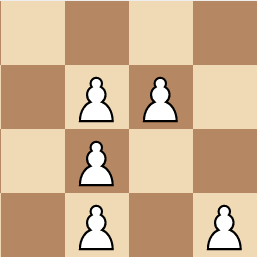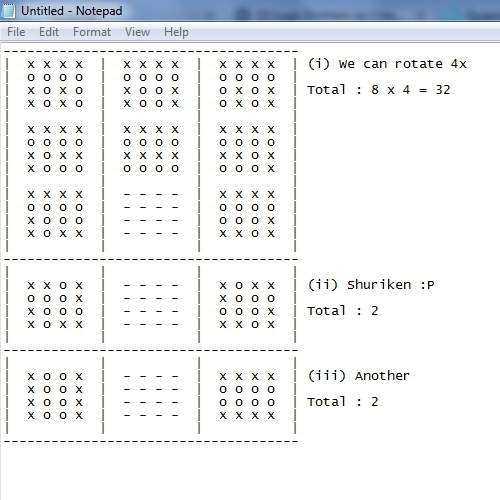Crowded Pawns
We can place a maximum of pawns on a chessboard such that there's no pawn being attacked. In how many ways can we do that? In other words, how many configurations let us place pawns?

The answer is 36.
This section requires Javascript.
You are seeing this because something didn't load right. We suggest you, (a) try
refreshing the page, (b) enabling javascript if it is disabled on your browser and,
finally, (c)
loading the
non-javascript version of this page
. We're sorry about the hassle.

First take note that putting a pawn on a colored tile (black or white) meant that on all four tiles directly diagonal to it you are not allowed to put another pawn (as they attack or be attacked by the first pawn). However, this first pawn doesn't affect the pawns in other tiles other than these 4 diagonal tiles - hence positions of pawns in white tiles are independent of positions of pawns in black tiles.
Then, we need to find to find the maximum number of pawns to fit into tiles of one color (e.g. black). Due to small board size, it is possible to manually determine that at most 4 black tiles have pawns, and that there are 6 configurations to allow this. Likewise there are also 6 configurations of most pawn pieces in white tiles due to symmetry.
Total configuration of all pawns = 6 × 6 = 3 6